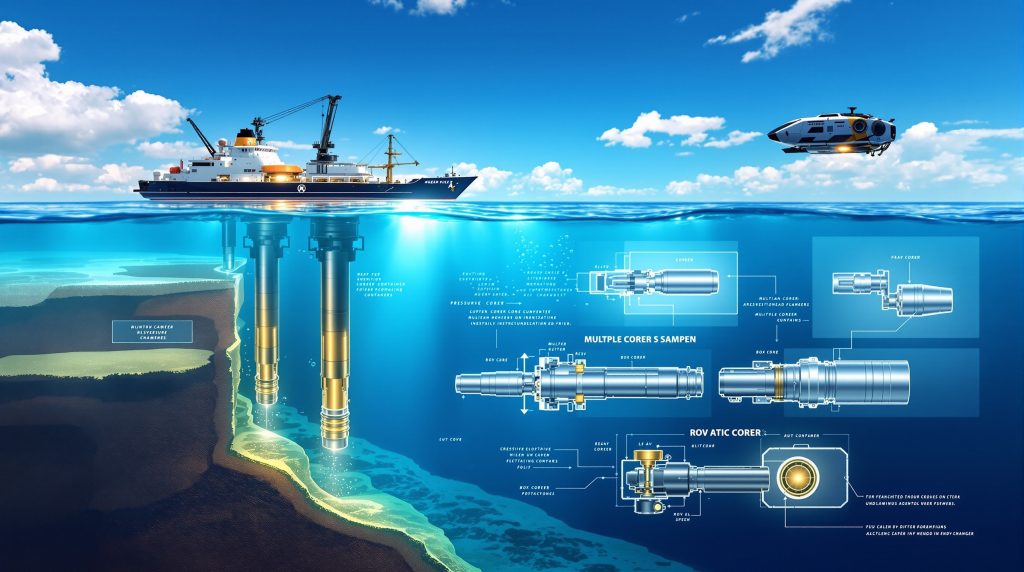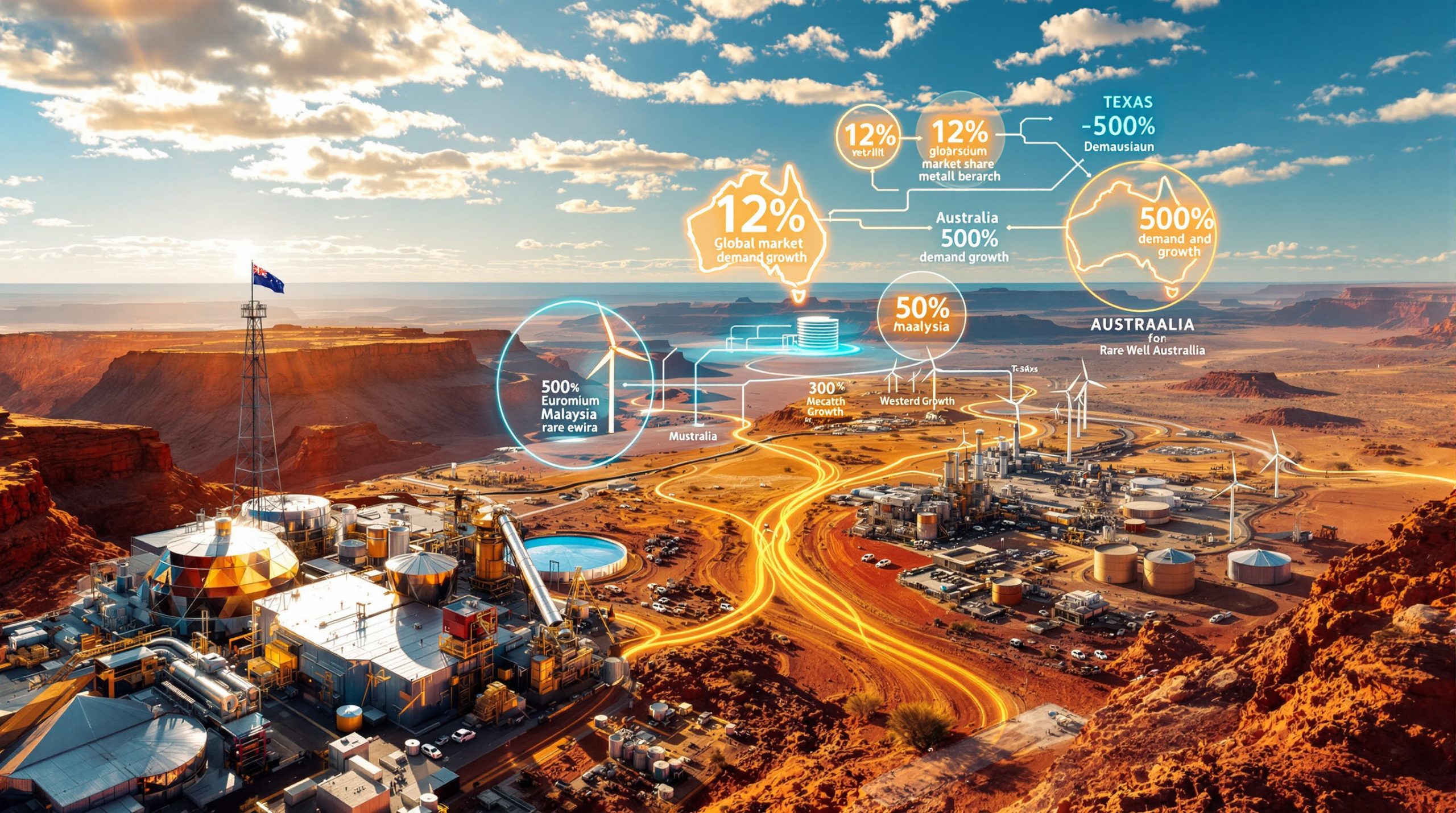Understanding Deep Ocean Sample Collection Systems
Deep sea sampling technology encompasses a comprehensive suite of specialised instruments designed to extract sediment, water, and biological specimens from the most extreme environments on Earth. These sophisticated systems operate at depths where pressures can exceed 300 atmospheres and temperatures hover near 2°C, far beyond the reach of conventional sampling methods.
The engineering challenges associated with deep sea sampling are immense. At depths beyond 3,000 metres, equipment must withstand crushing pressures while maintaining precise operational control. The complete absence of natural light, combined with near-freezing temperatures, creates an environment that demands revolutionary approaches to sample collection and preservation.
Modern deep sea sampling systems incorporate advanced materials science, precision hydraulics, and sophisticated sealing mechanisms to ensure sample integrity throughout the collection and recovery process. Furthermore, understanding the mineral exploration importance helps contextualise how these technologies represent decades of engineering innovation focused on overcoming the unique challenges presented by abyssal environments.
Why Scientists Need Specialised Deep Sea Sampling Equipment
The extreme conditions found in deep ocean environments necessitate purpose-built sampling equipment that can function reliably under extraordinary pressures and temperatures. Traditional sampling methods fail catastrophically at depths where the water column exerts forces equivalent to having multiple elephants standing on every square inch of equipment surface area.
Critical Environmental Factors:
- Hydrostatic pressures increasing by approximately 10.1 atmospheres per 100 metres of depth
- Consistent temperatures between 1-4°C in deep ocean zones
- Zero photosynthetic light penetration below 1,000 metres
- Unique chemical compositions requiring uncontaminated sample collection
Primary Research Applications:
- Climate reconstruction studies through analysis of sediment core layers spanning millennia
- Deep-sea ecosystem mapping for biodiversity conservation efforts
- Geological surveys identifying mineral deposits and seafloor composition
- Pollution monitoring tracking contaminant distribution in deep waters
- Oceanographic modelling supporting current pattern and temperature studies
The scientific value of deep sea samples extends far beyond immediate research applications. However, sediment cores collected from abyssal depths contain environmental records dating back hundreds of thousands of years, providing crucial data for understanding long-term climate patterns and predicting future environmental changes.
Advanced Sediment Collection Technologies
Multiple Corer Systems (MUC)
Multiple corer technology represents a breakthrough in precision sediment sampling, simultaneously extracting several small-diameter cores ranging from 60-100mm in width and up to 60cm in length. These systems utilise gravity-assisted descent mechanisms combined with hydraulic dampening to minimise disturbance to critical sediment layers.
The key advantage of MUC systems lies in their ability to preserve the sediment-water interface, which contains the most recent environmental data and active biological processes. In addition, advanced trigger mechanisms ensure cores penetrate seafloor sediments at controlled rates, preventing compression artefacts that could compromise sample quality.
Giant Box Corer Systems (GBC)
Large-scale sampling platforms collect substantial sediment volumes with surface areas reaching 50cm x 50cm, providing sufficient material for comprehensive biological and chemical analysis. These systems incorporate spring-loaded sealing mechanisms that activate automatically upon sample collection, preventing sample loss during the lengthy ascent process.
GBC systems excel in applications requiring large organism counts or extensive chemical analysis. Consequently, the substantial sample volume enables researchers to conduct multiple analytical procedures on a single collected specimen, maximising the scientific return from expensive deep-sea expeditions.
Gravity-Assisted Coring Methods
Specialised gravity corers utilise precisely calculated weights and controlled descent rates to achieve optimal penetration depths while preserving delicate sediment structures. For instance, these systems incorporate advanced hydraulic dampening mechanisms that prevent excessive impact forces during seafloor contact.
| Coring System Type | Sample Diameter | Maximum Depth | Typical Recovery Rate |
|---|---|---|---|
| Multiple Corer | 60-100mm | 6,000+ metres | 85-95% |
| Giant Box Corer | 50cm x 50cm | 5,000 metres | 75-90% |
| Gravity Corer | 100-150mm | 6,000+ metres | 90-98% |
Revolutionary Pressure-Retaining Technologies
Hydraulic Suction Macro-biological Samplers (HSMPS)
These groundbreaking systems maintain ambient deep-sea pressure conditions throughout the specimen collection and recovery process, enabling successful collection of live organisms that would otherwise be destroyed by rapid decompression. Advanced pressure-compensation chambers utilise precisely controlled hydraulic systems to gradually adjust internal pressure during ascent.
HSMPS technology incorporates thermal insulation systems that maintain deep sea sampling technology standards by preserving temperatures during the multi-hour recovery process. Furthermore, specialised flow control mechanisms ensure adequate water circulation while preventing pressure equalisation that could damage delicate specimens.
Gas-Tight Water Collection Systems
State-of-the-art water samplers employ displacement-based collection mechanisms that replace pre-filled chambers with 100% uncontaminated deep-sea water. These systems eliminate surface contamination through sophisticated sealing protocols and inert gas purging systems.
The precision engineering required for gas-tight sealing at extreme pressures represents a significant technological achievement. However, advanced materials including corrosion-resistant titanium alloys and specialised polymer seals enable reliable operation in the harsh chemical environment of deep ocean waters, similar to advances in ai in drilling & blasting technologies.
ROV-Enhanced Sampling Capabilities
Precision Manipulation Systems
Remotely operated vehicles equipped with advanced manipulator arms provide unprecedented precision in specimen targeting and collection. These systems enable selective sampling of specific organisms, geological formations, or water masses based on real-time visual assessment.
Specialised ROV Sampling Tools:
- Hydraulic push-core systems for targeted sediment extraction
- Variable-flow suction samplers for biological specimen collection
- Diamond-tipped cutting tools for hard substrate sampling
- Multi-chamber storage systems for specimen segregation
Operational Advantages and Limitations
ROV-mounted sampling systems offer significant advantages including real-time quality control, access to vertical or irregular terrain, and selective targeting capabilities. However, these systems face constraints including limited payload capacity, extensive operator training requirements, and high operational costs exceeding $25,000 per day for deep-sea operations.
Weather dependency remains a critical limitation, with sea states above Force 4 typically preventing safe ROV deployment. Consequently, this constraint can significantly impact research scheduling and expedition costs, particularly in regions with unpredictable weather patterns.
Supporting Technologies and Integrated Systems
Platform Stabilisation Systems
Advanced HAPS (Hydraulic Actuated Positioning Systems) frames provide stable platforms for sampling equipment deployment, incorporating active compensation for vessel movement and current effects. These systems utilise real-time motion sensors and hydraulic actuators to maintain precise positioning during critical sampling operations.
Comparative Sampling System Specifications:
| System Type | Depth Range | Sample Volume | Deployment Method |
|---|---|---|---|
| Ekman Grabs | 200-2,000m | 15-20 litres | Free-fall |
| Van Veen Grabs | 500-3,000m | 10-40 litres | Hydraulic |
| Rosette Samplers | 6,000m+ | 1-30L per bottle | CTD-integrated |
| HAPS Frames | 6,000m+ | Variable | Platform-mounted |
Quality Assurance and Sample Preservation
Advanced Pressure Management
Sophisticated decompression protocols prevent cellular damage through controlled pressure reduction during sample recovery. Multi-stage pressure chambers enable gradual adjustment from abyssal pressures to surface conditions over periods ranging from 2-8 hours depending on collection depth.
Temperature-controlled storage systems maintain samples within ±0.5°C of collection temperature throughout the recovery process. In addition, advanced insulation materials and active cooling systems ensure sample integrity even during extended surface operations.
Contamination Prevention Protocols
Rigorous sterile preparation procedures include equipment cleaning with specialised solvents, inert gas purging of collection chambers, and sealed transport containers. Moreover, deep-sea sampling techniques continue evolving with chain-of-custody documentation systems that track sample handling from collection through laboratory analysis, ensuring data integrity and scientific credibility.
Cutting-Edge Innovations in Deep Sea Sampling
Autonomous Sampling Platforms
Next-generation systems operate independently using sophisticated AI-driven collection protocols, reducing vessel dependency and operational costs. These platforms can execute pre-programmed sampling missions spanning multiple days, dramatically expanding research coverage areas while minimising human intervention requirements.
Autonomous systems incorporate advanced navigation capabilities using acoustic positioning networks and inertial guidance systems. Furthermore, power management innovations including advanced battery technologies and energy harvesting systems enable extended operation periods exceeding 72 hours on single deployments.
Real-Time Data Transmission
Revolutionary communication systems transmit sample quality metrics and environmental data during active collection operations. Acoustic modems operating at frequencies optimised for deep-water transmission enable immediate quality assessment and adaptive sampling decisions.
These communication capabilities allow researchers to modify sampling protocols based on real-time observations, significantly improving research efficiency and scientific outcomes. For instance, data compression algorithms optimise transmission of critical environmental parameters including temperature, salinity, dissolved oxygen, and turbidity measurements.
Scientific Applications and Research Impact
Climate Change Documentation
Deep-sea sediment cores provide unparalleled historical climate records spanning 100,000+ years, revealing detailed patterns of ocean temperature fluctuations, atmospheric CO2 variations, and ice sheet dynamics. These records are essential for validating climate models and understanding natural climate variability.
Analysis of foraminifera shells preserved in sediment cores enables reconstruction of past ocean temperatures with precision approaching ±0.2°C. However, isotopic analysis of these microscopic organisms provides data on ancient ocean chemistry and circulation patterns that influence current climate projections.
Biodiversity Conservation Science
Systematic deep-sea sampling programmes have documented previously unknown species at rates exceeding 100 new species per expedition. These discoveries are crucial for understanding evolutionary processes and ecosystem dynamics in Earth's largest habitat, complementing broader mining industry evolution in environmental stewardship.
Resource Assessment Applications
Geological sampling techniques enable identification of polymetallic nodule fields, massive sulphide deposits, and rare earth element concentrations. Furthermore, advanced analytical methods applied to collected samples provide critical data for sustainable resource extraction planning and environmental impact assessment.
Technical Challenges and Engineering Solutions
Materials Science Advances
Development of new corrosion-resistant alloys and high-pressure sealing materials represents ongoing engineering challenges. Titanium-based alloys offer superior corrosion resistance but require specialised welding techniques and quality control procedures.
Advanced polymer seals capable of maintaining integrity under extreme pressure differential require precise manufacturing tolerances and specialised installation procedures. Consequently, these components often represent the limiting factor in system reliability and operational depth capability.
Power and Communication Limitations
Extended deep-sea operations require sophisticated power management systems capable of supporting multiple sampling devices, navigation equipment, and communication systems. Advanced lithium-ion battery technologies provide energy densities approaching 200 Wh/kg, enabling mission durations previously impossible with conventional power systems.
Economic and Logistical Constraints
Deep sea sampling technology operations require substantial financial investments, with comprehensive expeditions costing $50,000-100,000 per day including vessel charter, equipment deployment, and specialist personnel. These costs limit research accessibility and require careful expedition planning to maximise scientific return on investment, similar to considerations in mining waste management strategies.
Environmental Considerations and Sustainable Practices
Ecosystem Impact Minimisation
Modern sampling protocols emphasise minimal ecosystem disturbance through precise targeting and limited collection volumes. Advanced imaging systems enable visual assessment before sampling, reducing unnecessary environmental impact while maintaining scientific objectives.
Regulatory frameworks governing deep-sea research continue evolving, with international agreements requiring environmental impact assessments for major sampling programmes. However, these requirements ensure responsible research practices while supporting continued scientific advancement.
Future Technological Developments
Artificial Intelligence Integration
Machine learning algorithms are revolutionising sampling location optimisation through analysis of environmental data patterns, historical records, and real-time sensor inputs. These systems can identify optimal sampling locations with accuracy rates exceeding 85%, dramatically improving research efficiency.
Moreover, proper drilling results interpretation techniques inform AI development for enhanced sampling accuracy and reduced environmental impact.
Miniaturisation and Accessibility
Ongoing miniaturisation efforts focus on developing compact sampling systems deployable from smaller research vessels, potentially reducing operational costs by 40-60% while expanding research accessibility for institutions with limited resources.
Sustainable Technology Development
Environmental consciousness drives innovation toward biodegradable sampling containers, energy-efficient operation protocols, and minimal ecosystem impact designs. For instance, deep sea sampling protocols increasingly emphasise these developments that balance scientific research needs with conservation responsibilities.
"The future of deep-sea research lies in developing technologies that maximise scientific return while minimising environmental impact," notes the latest research on sustainable ocean exploration practices.
Disclaimer: The technical specifications, operational costs, and performance metrics presented in this article are based on general industry standards and may vary significantly based on specific equipment manufacturers, operational conditions, and research requirements. Readers should consult with qualified marine technology specialists and equipment manufacturers for precise specifications and cost estimates for specific applications.
Ready to Capitalise on Deep Ocean Mining Opportunities?
The advanced sampling technologies detailed above are revolutionising underwater mineral exploration, with many ASX-listed companies utilising these methods to identify lucrative deep-sea deposits. Discovery Alert's proprietary Discovery IQ model instantly alerts investors to significant mineral discoveries, including those emerging from deep ocean exploration programmes, providing the market edge needed to capitalise on these high-potential opportunities. Begin your 30-day free trial today and position yourself ahead of the next major deep-sea mineral discovery.




